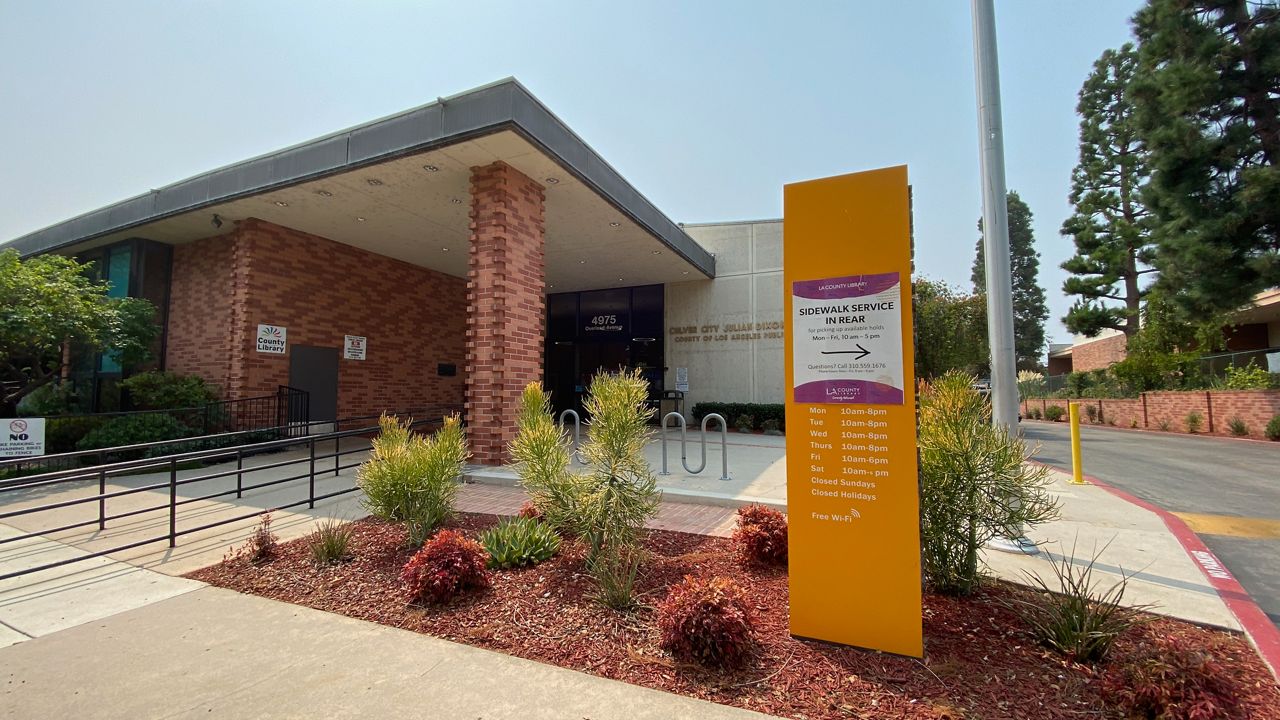LOS ANGELES — In less than a week after the Los Angeles County Library announced its latest program, lending out laptop computers in the same manner as books, the library was out of stock.
What You Need To Know
- The Los Angeles County Library has begun loaning out computer kits to patrons
- Kits include a Chromebook laptop, a Wi-Fi hotspot, chargers, a bag, and an instruction card
- The program began with 60 kits, all of which were checked out nearly immediately, but 500 more kits have been ordered
- The computer kit program is starting with 10 Los Angeles County libraries: AC Bilbrew Library, Compton Library, East Los Angeles Library, Huntington Park Library, La Puente Library, Lancaster Library, Leland R. Weaver Library, Lennox Library, San Fernando Library, and South Whittier Library
All 60 kits, with a Chromebook laptop computer, a Wi-Fi hotspot, two chargers, a bag, and an instruction card, were all checked out.
There’s good news, though. Another 500 kits are on order, and making their way to Los Angeles, to help meet the demand for Internet access across the communities of Los Angeles that rely on the library to connect to the Internet.
“I’m not the first nor the last to say that libraries are the cornerstone of democracy, the last bastion of democracy, and I also hear thrown around this meaningful concept that libraries are a part of the social infrastructure,” said Skye Patrick, the executive director of the L.A. County Library. “When our libraries are closed, people don’t always realize the impact that it could have, because it is the gathering place for everyone.”
On September 1, the L.A. County Library announced its program to offer members three-week loans of laptop and hotspot kits, including a Chromebook, a wireless hotspot, a bag, and chargers. The goal, according to the library’s announcement, is that the devices will “more fully enable those negatively impacted by the digital divide.”
To pilot the program, the library chose 10 locations spread out around the five L.A. County Supervisory Districts, with the lowest Internet subscription rates in the county, at or below 63 percent rate s of subscription.
“We’re looking to supplement what’s happening at the schools, and areas having more difficulty, but we’re also looking at the adult population and the older adult population,” Patrick said. “A lot of people are having to retool themselves for this new workforce.”
The county maintains a rough map of available public Wi-Fi hotspots (including a significant number of publicly-accessible McDonald’s and Starbucks locations), and the libraries have kept the light on, so to speak, for people who need Internet access in the areas outside of their buildings. But the hotspots grant access to people who might not otherwise be able to connect to the Internet, especially as so many otherwise-public spaces have limited their access during the pandemic.
The library’s computer kit loan program has been a part of the library’s technological road map for years, alongside a laundry list of upgrades and updates to the organization’s infrastructure, website, and hardware.
“This was couched in that road map, and it got off-track. Interestingly enough, when the pandemic hit, we thought, ‘OK, we have to push it forward,’” Patrick said.
It’s also a twist on an existing program, in which laptops are loaned out for use inside 20 of the county’s 86 libraries — though about 450 of the pre-existing library laptops have been distributed among many L.A. County departments during the pandemic, to help employees telework.
The ultimate goal, Patrick said, is for the pool of at least 560 laptop kits to be available for public use.
This has all part of the library’s pivot to digital and distance services amid the pandemic.
Forty-six of the 86 L.A. County library locations offer sidewalk services, including printing; approximately 55,000 digital library cards have been distributed since they began being offered in mid-March.
The library, as a whole, has seen more than a 300 percent usage increase compared to the same period last year, primarily among digital services, according to Patrick.
“Our usage has skyrocketed because I think people just recognize the value in times of economic downturn, people realize the resources they have available to them,” Patrick said.



